Abstract
The enormous variety of digital content encourages providers to engage users and consumers on their services. They use different recommendation systems in order to meet their customers’ expectations and preferences. Such methods direct clients according to their needs and requirements by analyzing vast information databases, such as prevalence, popularity, and relevance of digital content. In this report, various methods of recommending books will be considered, such as content-based and collaborative filtering.
Introduction
Due to the wide variety of digital content, consumers have vast choices of digital content that can be suggested to them. The content-based and collaborative filtering book recommendation systems will be considered to determine how they can be applied to analyze the evidence about clients’ preferences. For the purposes of this report, book recommendation systems are defined as algorithms aimed at helping customers find, choose, and purchase books via targeted recommendations based on their requests, needs, and previously bought items.
Problem Analysis
Recommendation systems are created to maintain and enhance services that navigate clients through the variety of digital content. Subramaniyaswamy et al. (2017) note that “the system provides recommendations based on the ratings on commodities that users have previously rated” (p. 55). Recommendation systems “have greatly alleviated information overload for their users by providing personalized suggestions for countless products” (Yang et al., 2017. p. 37). Thus, these systems contribute to the online shopping experience becoming more convenient as they account for customers’ preferences. Recommendation systems engage customers, transform shoppers into clients, and help increase the revenue of the online marketplace.
Report Organization
The present report aims to discuss different book recommendations systems and propose the most appropriate one for the digital stores. Specifically, the report will consider available data sources and most used data exploration methods and their advantages and disadvantages. In addition, the necessity of sat-preprocessing will be addressed. The report will also suggest the most appropriate book recommendations system based on the hybrid filtering model.
Data Analysis
Recommender systems classification is determined by identifying the exact method and technique used to provide suggestions to the clients. Content-based filtering analyzes customer-rated items, their content, and the given ratings to create a profile for targeted recommendations (Patil et al., 2019). The drawback of the method is that looking for similarities between content elements may lead to over-specific recommendations that include elements already known to the consumer and offer little value. In contrast, collaborative filtering is a practice of incorporating user’s evaluation of items, the record of their previous purchases, and the purchase records of customers who bought similar items (Patil et al., 2019). However, this method requires analyzing a vast amount of data pulled from the profiles of numerous clients, which may cause scalability problems.
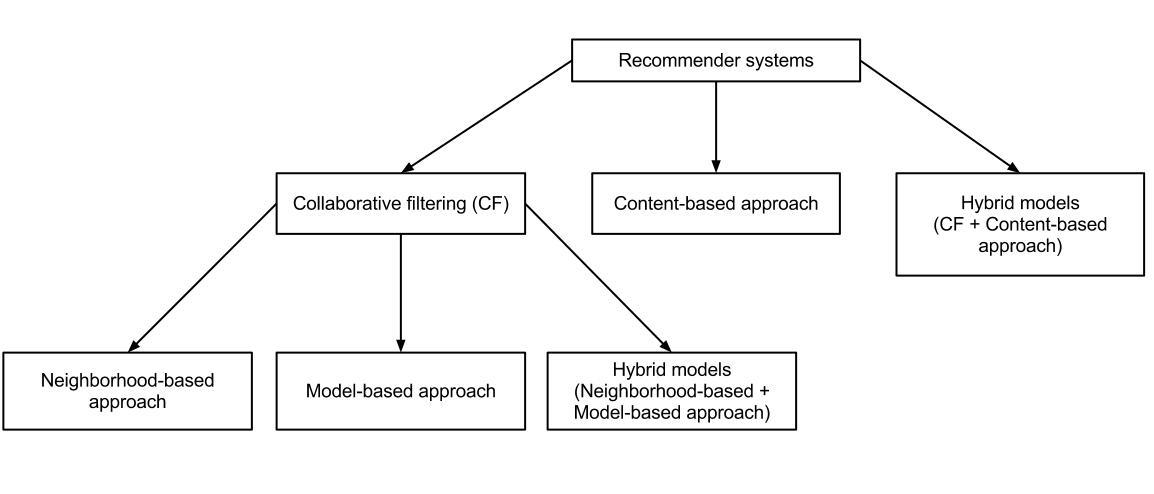
Data Sources
One of the most commonly used recommendations systems is collaborative filtering. According to Nassar, Jafar, and Rahhal (2020), “they do not need any previous knowledge about users or items, instead, they make recommendations based on interactions between them” (p. 1). Collaborative filtering is most commonly based on a user-to-user approach. The method is based on finding or creating a neighborhood of similar users or who exhibit comparable interests as the target client (Patil et al., 2019). Thus, the system predicts the rating a user is likely to assign to a product and offers them appropriate suggestions based on those projections.
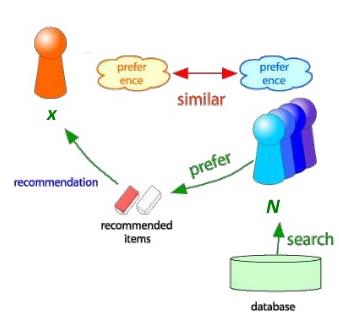
Data Exploration
The collaborative filtering method is based on the interrelation of client and content, which is encoded in a rating feedback matrix where each content element belongs to a specific user. However, this model cannot be employed for new shoppers or users who rarely leave comments. According to Wei et al. (2017), a matrix comprised of few sporadic ratings is challenging to determine the relationship between the customers and the goods they purchased to make a meaningful recommendation. As a result, the efficiency and accuracy of the recommendation system may not always meet consumers’ expectations. Furthermore, Lops et al. (2019) note that a content-based system fails to consider the quality of the items when preparing recommendations for the customers. As a result, content-based filtering only offers book recommendations based on the user’s previously liked items but that the customer is unlikely to buy due to them not being of interest to them. In both cases, services create hybrid recommendation systems that unite collaborative and content-based filtering models to provide online shoppers with valuable and precise book suggestions.
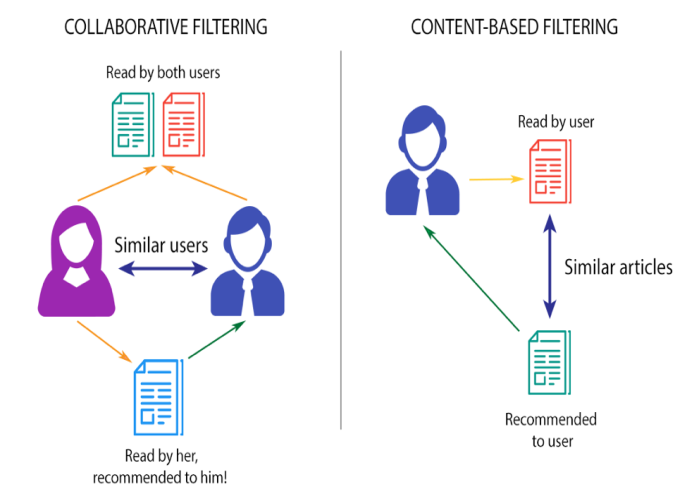
Data Pre-Processing
In order to extract structure-relevant information from non-structured data, such as texts, a pre-processing phase is required. According to Mohamed, Khafagy, and Ibrahim (2019), relevant item representation is shifted from the original information space to the target one through the implementation of feature extraction techniques that analyze the data items. This procedure is defined as the data pre-processing stage or process. Pre-processing is a necessary step for filtering, normalization, and transformation of the various components of the customer profile.
Solution Design
Even though the recommendation systems discussed above are among the most widely used by e-commerce sites, they have distinct disadvantages. In order to improve the efficiency and accuracy of recommendation systems, different approaches can be employed. For example, Kumar et al. (2017) propose to create a more accurate rating matrix by engineering the modern two-class structure of binary matrix factorization. Moreover, more precise book suggestions selection may be produced by designing a hybrid recommendation system. According to Lops et al. (2019), the necessity for a hybrid model stems from the availability of new data and knowledge sources. Structured and unstructured sources, including user-generated content, can be employed to make more accurate and meaningful recommendations for users (Lops et al., 2019). It can be asserted that such an approach will lead to a considerable increase in customer satisfaction due to the consolidation of the advantages of content-based and collaborative filtering models.
Implementation
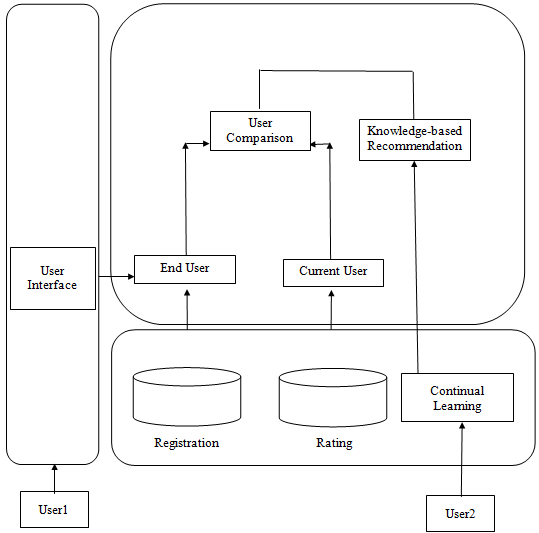
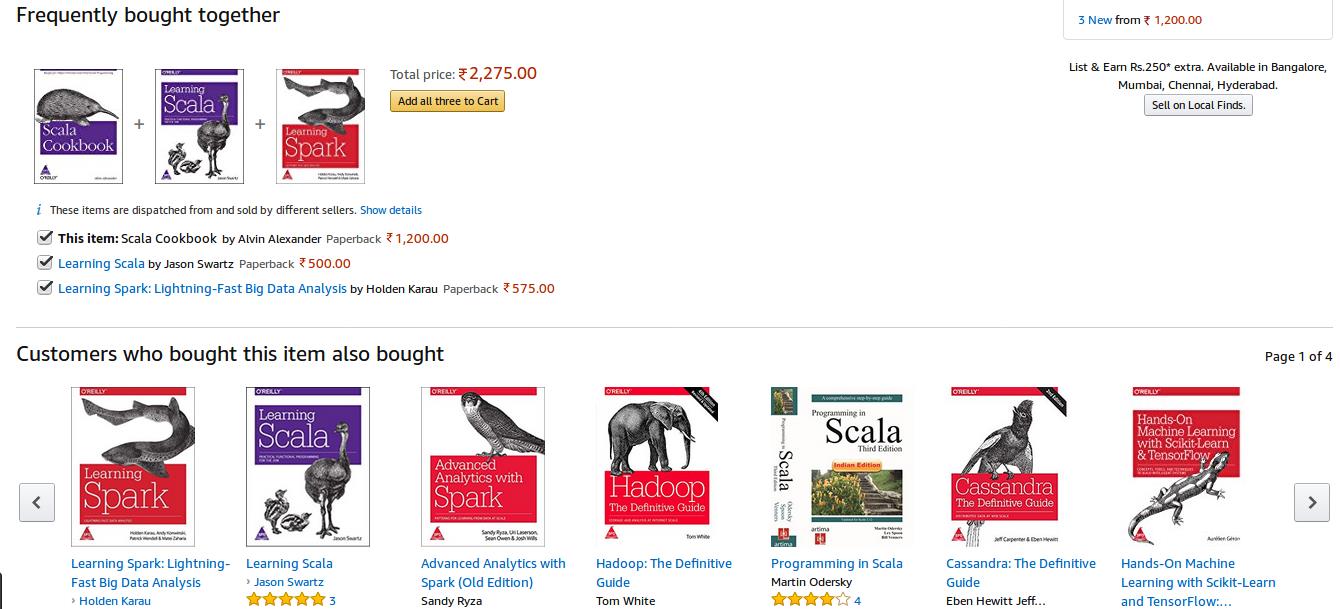
Association rule mining may serve as an example of effective book recommendation system implementation. Patil et al. (2019) state that association rule mining is a machine learning model utilized to search for relevant user data. Specifically, the model establishes “different types of patterns, correlations, and relationships between different types of data in a large data set” (Patil et al., p. 86). Service algorithms determine a relationship between different users’ previous purchases and relevant book topics that might attract their attention in the future. Overall, this method represents a hybrid recommendation system that improves the efficiency and accuracy of book suggestions.
Conclusion
In order to meet customers’ expectations, services use different recommendation methods to conduct an accurate analysis of clients’ preferences and provide them with suggestions that can translate into actual purchases. Although content-based and collaborative filtering methods are widely used in the book domain, they do not always afford accurate recommendations. However, various hybrid models, including association rule mining, can provide compelling book suggestions to customers.
Reference List
Kumar, V. et al. (2017) “Collaborative filtering using multiple binary maximum margin matrix factorizations”, Information Sciences, 380, pp. 1–11. doi: 10.1016/j.ins.2016.11.003.
Lops, P. et al. (2019) “Trends in content-based recommendation”, User Modeling and User-Adapted Interaction, 29(2), pp. 239–249. doi: 10.1007/s11257-019-09231-w.
Mohamed, M., Khafagy, M. and Ibrahim, M. (2019) “Recommender systems challenges and solutions survey”, 2019 International Conference on Innovative Trends in Computer Engineering (ITCE), pp. 149–155. doi: 10.1109/itce.2019.8646645.
Nassar, N., Jafar, A. and Rahhal, Y. (2020) “A novel deep multi-criteria collaborative filtering model for recommendation system”, Knowledge-Based Systems, 187, pp. 1–7. doi: 10.1016/j.knosys.2019.06.019.
Patil, A. et al. (2019) “Online book recommendation system using association rule mining and collaborative filtering’”, International Journal of Computer Science and Mobile Computing, 8(4), pp. 37–83.
Subramaniyaswamy, V. et al. (2017) “A personalised movie recommendation system based on collaborative filtering”, International Journal of High Performance Computing and Networking, 10(1/2), pp. 54–63. doi: 10.1504/ijhpcn.2017.083199.
Wei, J. et al. (2017) “Collaborative filtering and deep learning based recommendation system for cold start items”, Expert Systems with Applications, 69, pp. 29–39. doi: 10.1016/j.eswa.2016.09.040.
Yang, S. et al. (2017) “Combining content-based and collaborative filtering for job recommendation system: A cost-sensitive statistical relational learning approach”, Knowledge-Based Systems, 136, pp. 37–45. doi: 10.1016/j.knosys.2017.08.017